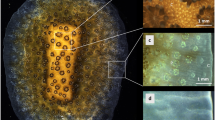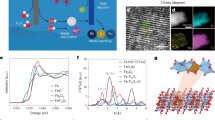Abstract
IN a recent communication Parry, Holliday and Blaxter1 reopened the question of the chloride-secreting cells of the gills of fish and, in agreement with Bevelander's2 arguments, they brought new indirect evidence against Keys and Willmer's theory3 and Copeland's4 conclusions.
Similar content being viewed by others
Article PDF
References
Parry, G., Holliday, F. G. T., and Blaxter, J. M. S., Nature, 183, 1248 (1959).
Bevelander, G., J. Morph., 57, 335 (1935); 59, 215 (1936).
Keys, A., and Willmer, E. N., J. Physiol., 76, 368 (1932).
Copeland, D. B., J. Morph., 82, 201 (1948); 87, 369 (1950).
Keys, A., Z. f. vergl. Physiol., 15, 364 (1931).
Krogh, A., Osmotic Regulation in Aquatic Animals (Cambridge Univ. Press, 1939).
Lison, L., Histochimie et cytochimie animale (Gauthier-Villars, Paris, 1953).
Fontaine, M., et al., Bull. Mus. Nat. Hist. Natur., Paris, 15, 373 (1943); J. de Physiol., 42, 287 (1950).
Defrise, A., Arch. Ital. Anat. e Embr., 33, 692 (1934).
Colombo, G., Arch. Ocean. e Limn., 12 (in the press).
Author information
Authors and Affiliations
Rights and permissions
About this article
Cite this article
COLOMBO, G. Chloride-secreting Cells in the Gills of European Eels. Nature 190, 101 (1961). https://doi.org/10.1038/190101a0
Issue date:
DOI: https://doi.org/10.1038/190101a0



